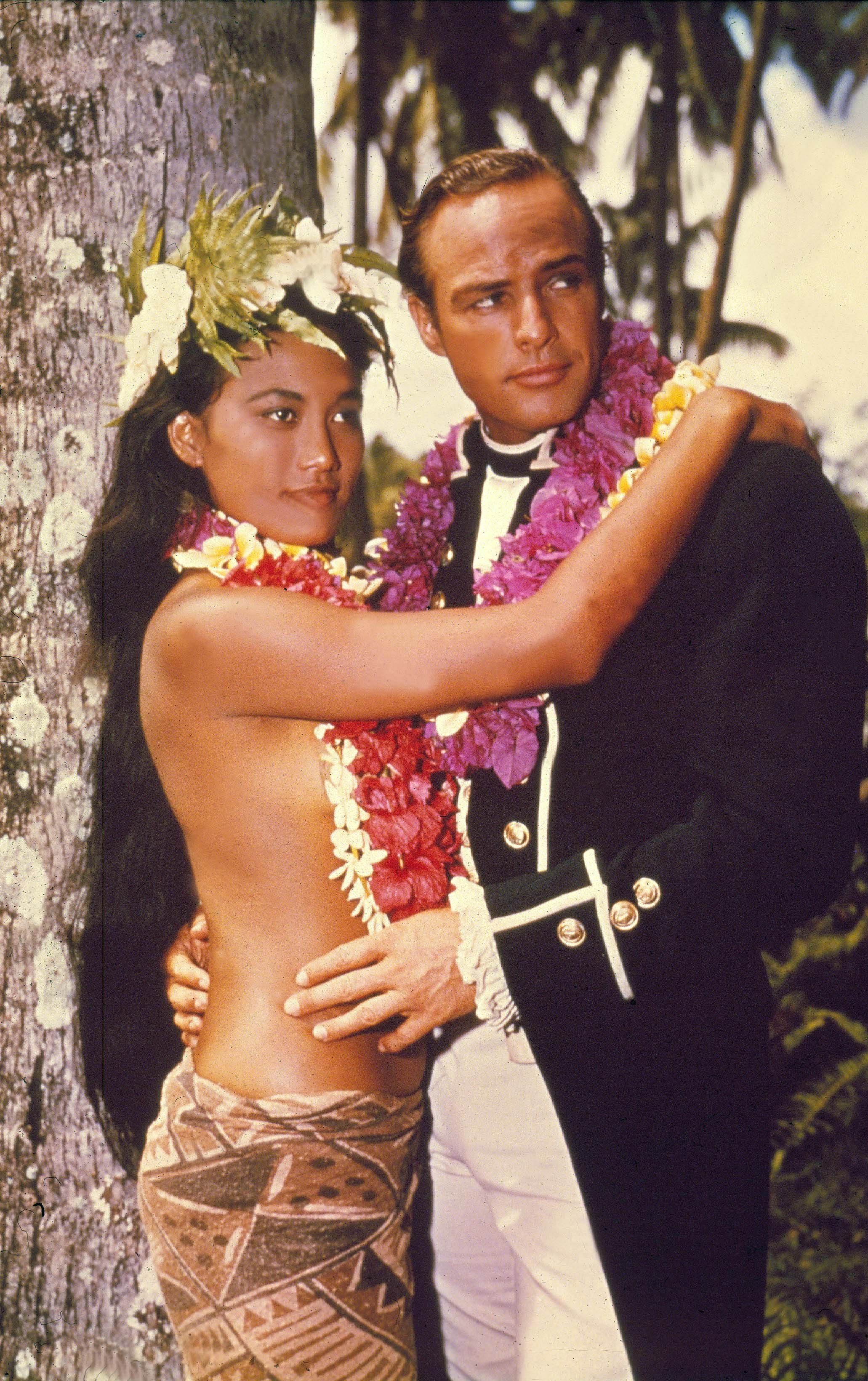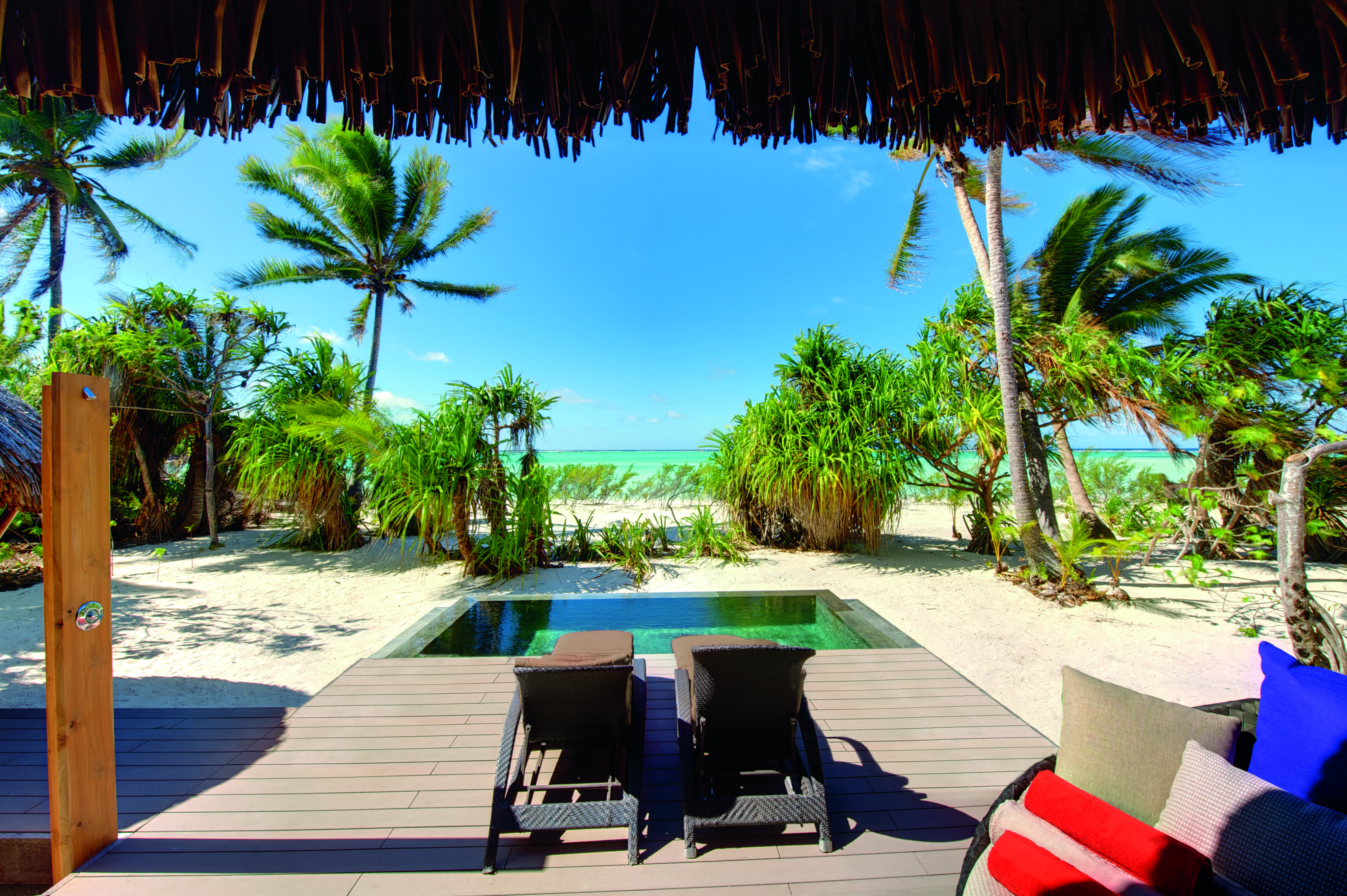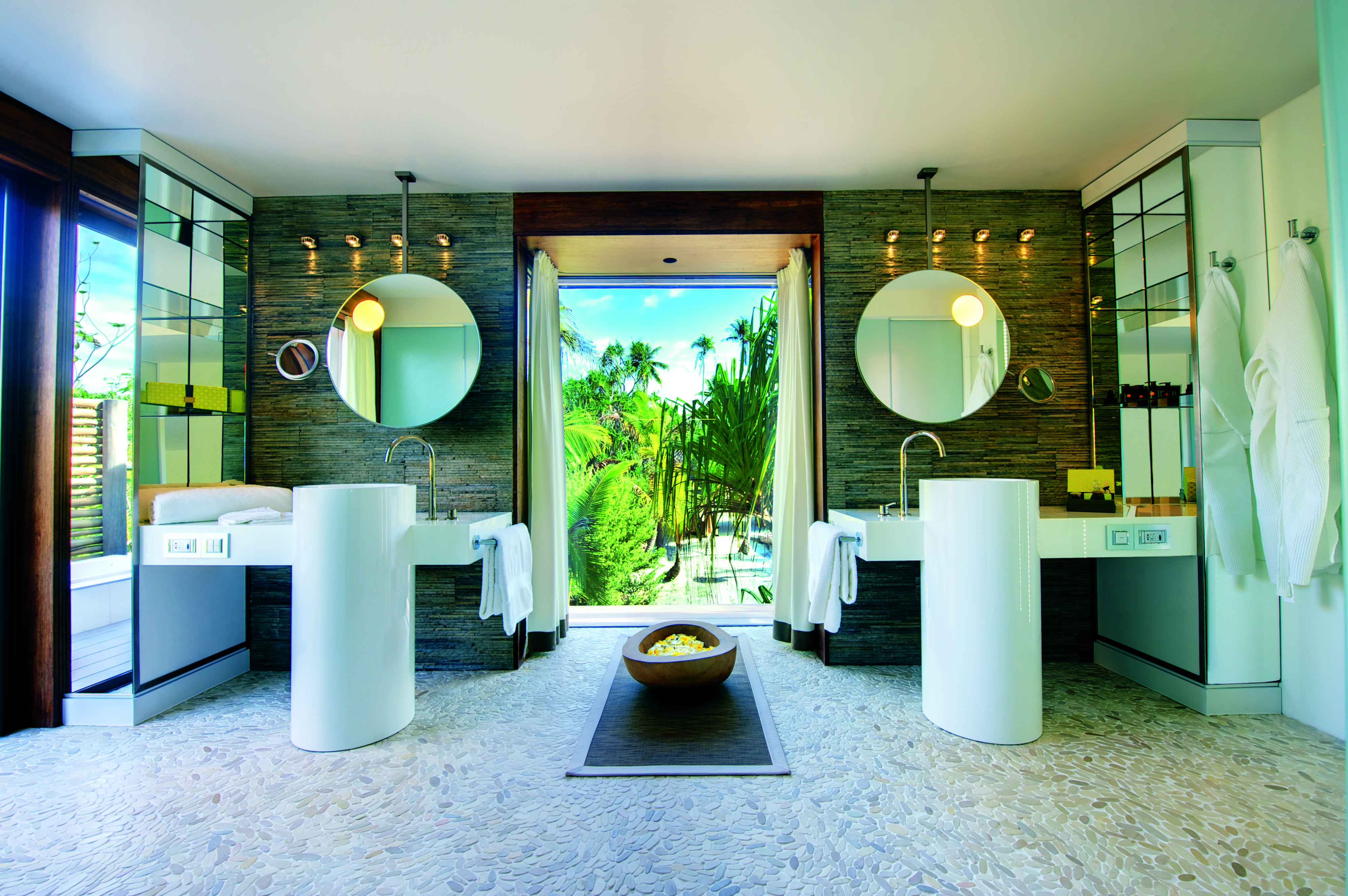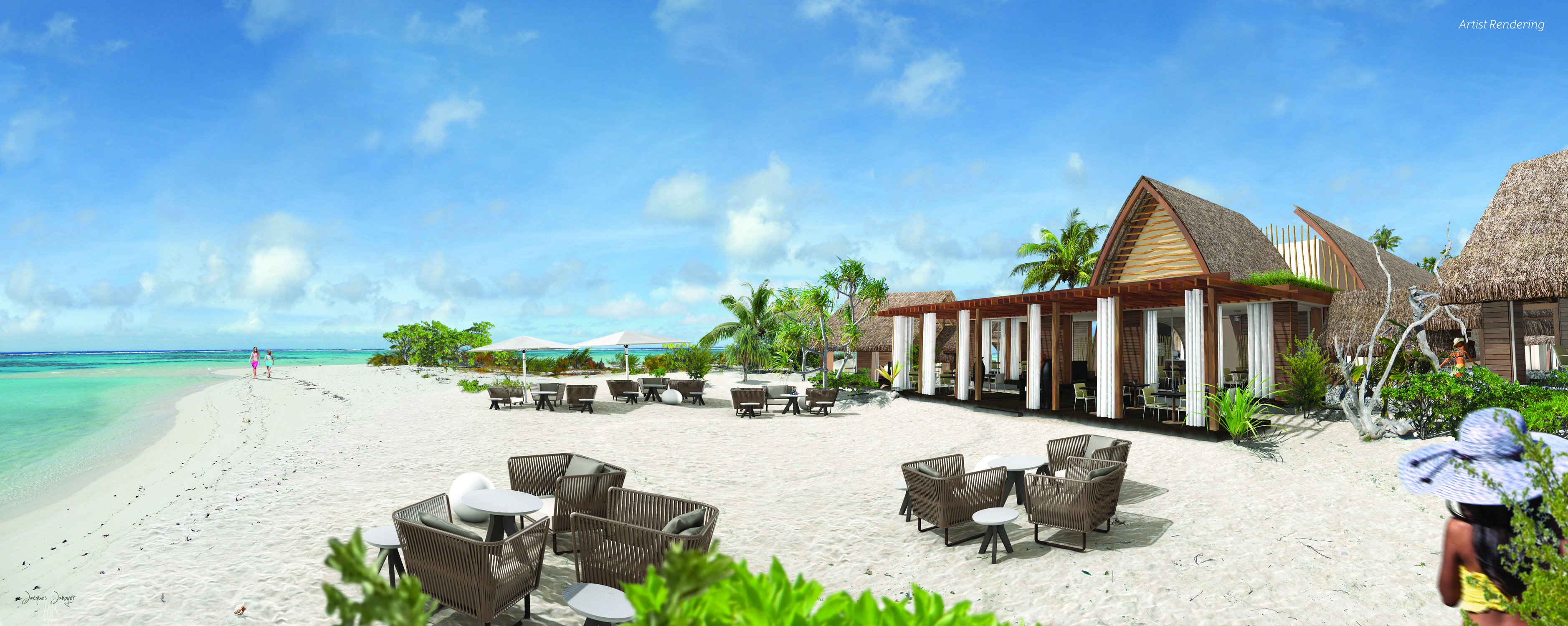Marlon Brando élete legszebb éveit saját luxus-szigetén töltötte, amely mostantól bárki számára nyitva áll ... persze jó borsos áron!
It was during the shooting of the Mutiny on the Bounty (1962), a film based on the 1789 real-life mutiny aboard the British Royal Navy ship on the island of Tahiti that the Hollywood film star, Marlon Brando fell in love with the South Pacific. He discovered the Island Tetiaroa when looking for filming locations and purchased it in the 1960s. The actor, who married Tahitian actress Tarita Teriipia, playing his love interest in the film, used the distant beauty spot as a getaway from his hectic life in Hollywood.

“Tetiaroa is beautiful beyond my capacity to describe” declared Marlon Brando of French Polynesia’s breathtakingly beautiful private island, an atoll composed of a dozen small islands surrounding a sparkling lagoon close to Tahiti. With access to the island by private plane, the resort features 35 villas on white-sand beaches frequented by sea turtles, manta rays and exotic birds. This hideaway is not only a tropical paradise but was also designed in an eco-friendly way and was influenced by Polynesian lifestyle and culture.
Tetiaroa Island
Lying 53 km to the north of Tahiti, the atoll – a ring-shaped coral reef encircling a lagoon – used to be a sacred spot and favoured retreat of the Tahitian high chiefs. The first people to follow the stars from Southeast Asia arrived 4,000 years ago, reaching the most easterly Society Islands by AD 300. Tahiti, the largest island in the area, is now the economic, cultural and political centre of French Polynesia. The settlers arrived in outrigger canoes with coconuts, bananas, breadfruit, chickens and pigs to the volcanic island famous for its black sand beaches.

On the one hand, Tetiaroa played an important role in the sacred rituals of the local people, since they believed that the gods and ancestors came down to earth to visit the temples there. On the other hand, it also acted as sacred pleasure gardens, where the young chiefs competed in archery tournaments and practiced their fighting skills, while the princesses retreated to the deep shade of the coconut trees to lighten the colour of their skin and gain weight in order to become more beautiful, trying to reach the voluptuous beauty ideal of the Pacific Islands.

Marlon Brando, bewitched by the natural beauty of Tetiaroa, had an airstrip and a small village built in 1970, consisting of 12 simple bungalows, a kitchen hut, dining hall and a bar. The residence built from local materials – buildings made from coconut wood and with thatched roofs and large seashells for sinks – eventually became a modest hotel managed by Tarita, whom he divorced in 1972. Brando was passionate about preserving Tetiaroa’s natural beauty, biodiversity and cultural richness and was determined to find a way in which it could be a centre for research and education and a model of sustainability. He was convinced that this small atoll could bring good to the entire world. “My mind is always soothed when I imagine myself sitting on my South Sea island at night. If I have my way, Tetiaroa will remain forever a place that reminds Tahitians of what they are and what they were centuries ago,” he said.
In 1999 he asked Richard Bailey, a long-time resident of Tahiti, who had created some of the region’s finest resorts, to help him draw up plans for the world’s first and foremost post-carbon resort—an island where innovative new technologies would enable a self-sustaining luxury environment for hotel guests, residents and scientific research. After Brando’s death, the executors of his estate gave development rights to a Tahitian company, construction began in 2009 and the Brando resort, legacy of that shared vision, will open for the public this July.

The resort can boast of a 7 km wide and 30 metres deep lagoon and the 35 luxury villas are equipped with solar panels, bio-fuel generators and a pioneering sea-water air conditioning system. The buildings, surrounded by crystal-clear waters and white-sandy beaches, are integrated within the natural landscape with a fluid indoor/outdoor design. The villas’ timbered walls and native gardens are surrounded by exquisite scenery. Rates include accommodation, spa treatments, all meals in all dining venues, most beverages and the option of 24-hour dining in the privacy of your villa.
The resort’s two restaurants showcase Polynesian-inspired dishes, East/West fusion and classic French cuisine. The award-winning cuisine of Guy Martin of the Michelin two-star-restaurant Le Grand Véfour in Paris is featured in both dining venues and in-room dining. The chef selects for the day’s dishes organically grown fruits and vegetables from the resort’s own gardens and orchards. Guests can also taste the most important staple of Polynesia, the breadfruit, whose name comes from the cooked but not fully ripe fruit, which has a potato-like flavour, similar to freshly baked bread. This plant – a species of flowering tree, reaching a height of 26 metres and producing grapefruit-sized fruits – was the reason why the Bounty originally came to the shores of Tahiti, since it could provide cheap and high-energy food for British slaves.

The means to explore the island’s astonishing biodiversity are also at the service of the guests: one bicycle per guest is provided, as well as snorkelling equipment with access to an outrigger canoe, kayak, and paddleboard. Guests can also join one organised trip per day to find out about the island’s wildlife with the help of an expert naturalist. At least 167 fish species and dolphins can be observed around the atoll, whales often pause at Tetiaroa during their annual migrations and during the nesting season, large sea turtles come to lay their eggs on the coral sands beneath the trees. Another unique opportunity is a visit to “Bird Island,” where thousands of parrots and seabirds roost every evening.
The resort also houses a Library and Explorer Center, where visitors can find books on French Polynesia and attend lectures and demonstrations about Polynesian culture, history, and lifestyle. Polynesian dance, handicraft and cuisine lessons will definitely make a stay unique and the music lessons on the ukulele, on the pahu – a sacred drum carved from a log and covered with a stretched sharkskin – or the toere – a hollowed-out log of milo wood played one-handed or with a stick made of iron wood – might spark a life-long passion for native Tahitian percussion instruments.
It was Marlon Brando’s dream to build a hands-on university to educate others about the many facets of this jewel, and therefore a research station has been established for scientists from all around the world to discover ways for the sustainable development of tropical islands. The onsite research scientists will also be delighted to talk about their research and the amazing birds and marine life found on the atoll. Committed to Brando’s vision, the stewards of the island strive to be a model for the rest of the world and leave Tetiaroa a better place, while encouraging and supporting innovation to address local and global environmental and sustainability issues. One of the goals of the research station on Tetiaroa is to help study ways to preserve animal and plant diversity on tropical atolls notwithstanding the onslaught of modern civilization.
shooting – forgatás (film)
mutiny – lázadás (hajón, hadseregben)
hectic – nagyon zsúfolt, elfoglalt
capacity – képesség
breathtakingly – lélegzetelállítóan
atoll – atoll, gyűrű alakú vulkáni sziget
hideaway – búvóhely
eco-friendly – környezetbarát
coral reef – korallzátony
sacred spot – szent hely
chief – törzsfő
settler – telepes
breadfruit – kenyérfa gyümölcse
outrigger canoe – outrigger kenu (oldaltámaszos)
on the one hand – egyrészt
ancestor – ős
temple – (nem keresztény) templom
on the other hand – másrészt
archery – íjászat
to gain weight – hízni
voluptuous – teltkarcsú, termetes
to be bewitched by – elbűvöli valami
thatched roof – zsuptető
modest – szerény
to preserve – megőrizni
sustainability – fenntarthatóság
century – évszázad
self-sustaining – önfenntartó
executor of one’s estate – hagyaték kezelője
legacy – örökség
solar panel – napelem
timbered wall – ácsolt fal
scenery – táj
to showcase – bemutatni
staple – legfontosabb élelmiszer
reason – ok
at the service of – valaki szolgálatára
snorkelling equipment – könnyűbúvár felszerelés
paddleboard – vízi deszka
species – faj
handicraft – kézművesség
percussion instrument – ütőhangszer
hands-on – gyakorlati tapasztalatot nyújtó
to be delighted to – nagy örömmel csinál valamit
to be committed to – elkötelezett valami iránt
to address an issue – problémával foglalkozni
notwithstanding – valami ellenére
onslaught – támadás



